Proper nutrition is the bedrock for a healthy and impactful life. Without it, children, families, and communities face significant challenges: disruptions to physical, mental, and emotional development; lost productivity; strain on healthcare systems; and instability.
As we strive to end childhood hunger both at home and abroad, we must find ways to turn abundance for some into a world without malnutrition. Understanding the scope and nature of the problem is a vital first step.
In this article, we will discuss:
- The Prevalence and Impact of Childhood Food Insecurity in the U.S.
- WIC Modernization and Funding
- SNAP and Child Tax Credit
- School and Summer Meal Programs
- The Prevalence and Impact of Childhood Food Insecurity Globally
- The Thousand Days Framework
- Funding Advocacy
The Facts About Childhood Hunger in the U.S.
In the United States, 13.5 percent of households consistently struggle to put food on the table. That’s more than 47 million people, including nearly 14 million children. One in five American children is at risk of hunger, and that rate is almost one in three for Black and Latino(a) children. Nearly 38 percent of children with a single mother and 25 percent of children with a single father lack needed nourishment.
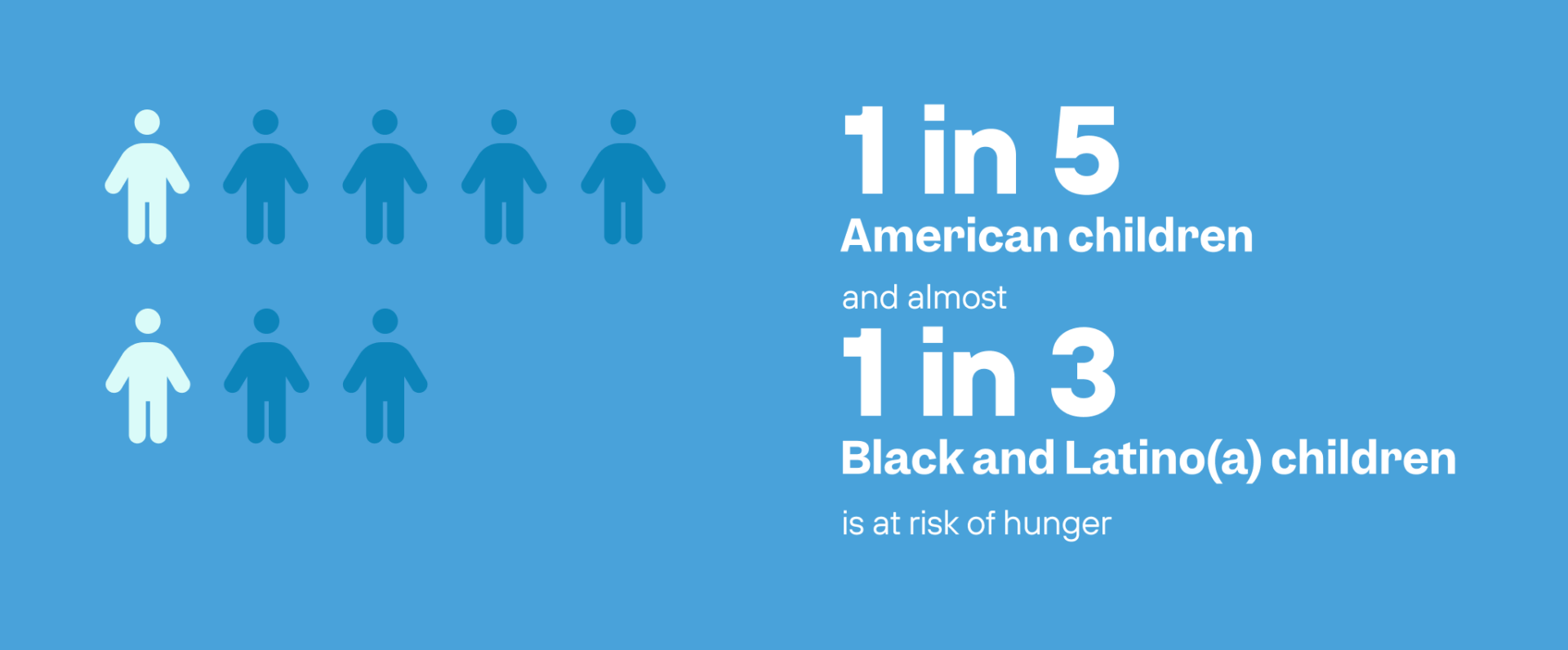
Food insecurity looks different for each family affected: adults in households bearing the brunt of restricted access to food by choosing to eat less so that their children have enough food, families skipping meals to stretch limited resources, facing tough choices between buying food or paying for utilities and rent.
There is enough food produced in the U.S. to feed everyone in the country. Here, and in other wealthier countries, hunger is not a result of food availability, but rather of access.
Over the last few years, rising inflation has continued to squeeze budgets even further by pushing up the prices of food, rent, and healthcare, causing a growing number of families to grapple with food insecurity and make difficult decisions on how to spend money.
The Impacts of Childhood Food Insecurity
Insufficient access to food has wide-ranging consequences for children, from education to healthcare, crime, and socialization.
Children’s performance at school declines when they regularly experience hunger. Concentration, mood, motor skills, and memory can all be affected by an empty stomach, making it difficult to learn and focus in a classroom environment. Children who are hungry have lower scores on measures of vocabulary and letter-word recognition, as well as worse reading and math scores.
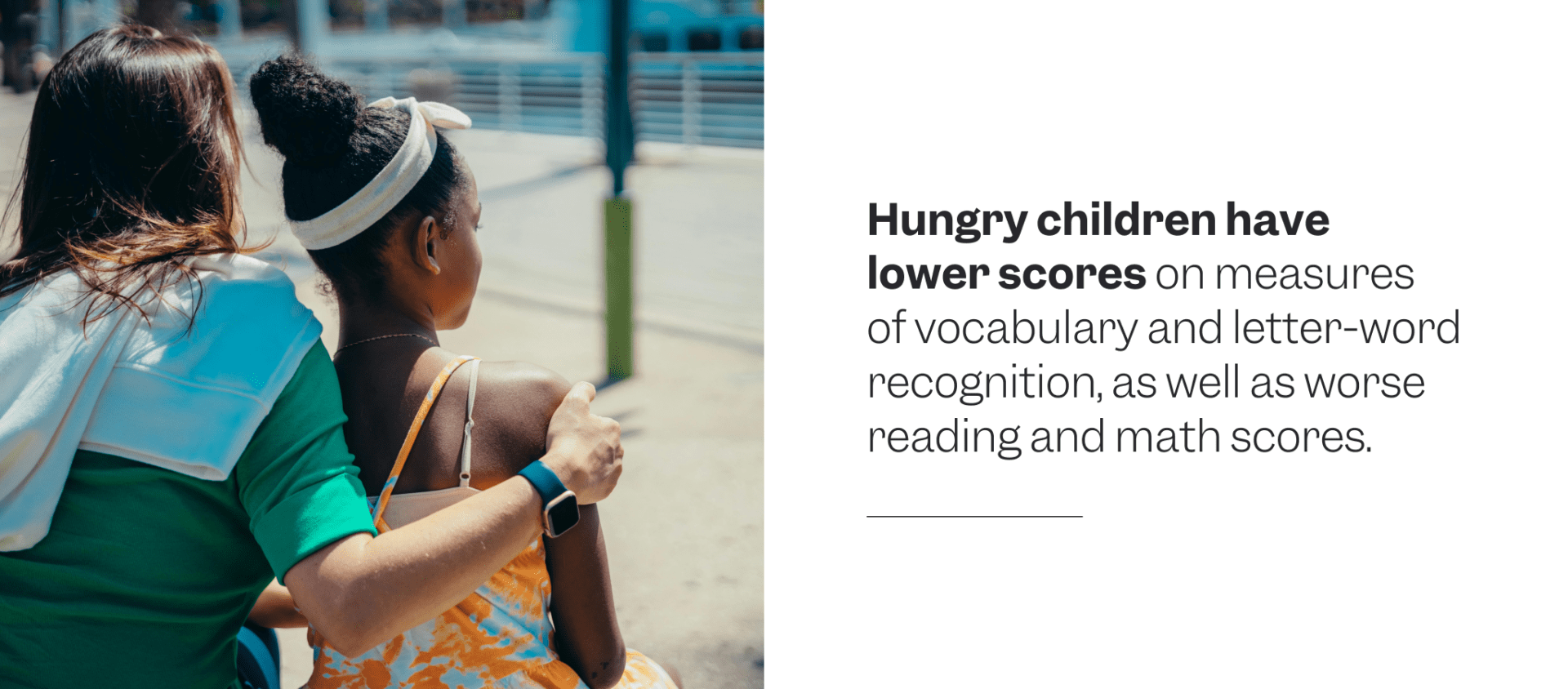
Since education is cumulative, with each year building on the previous one, missing out on key lessons and developmental milestones due to hunger can have long-term effects on academic achievement and future opportunities.
Food insecure students are about 3.5 times more likely than their peers to consider dropping out of school, and 3 times more likely to forgo academics in favor of earning income to support themselves.
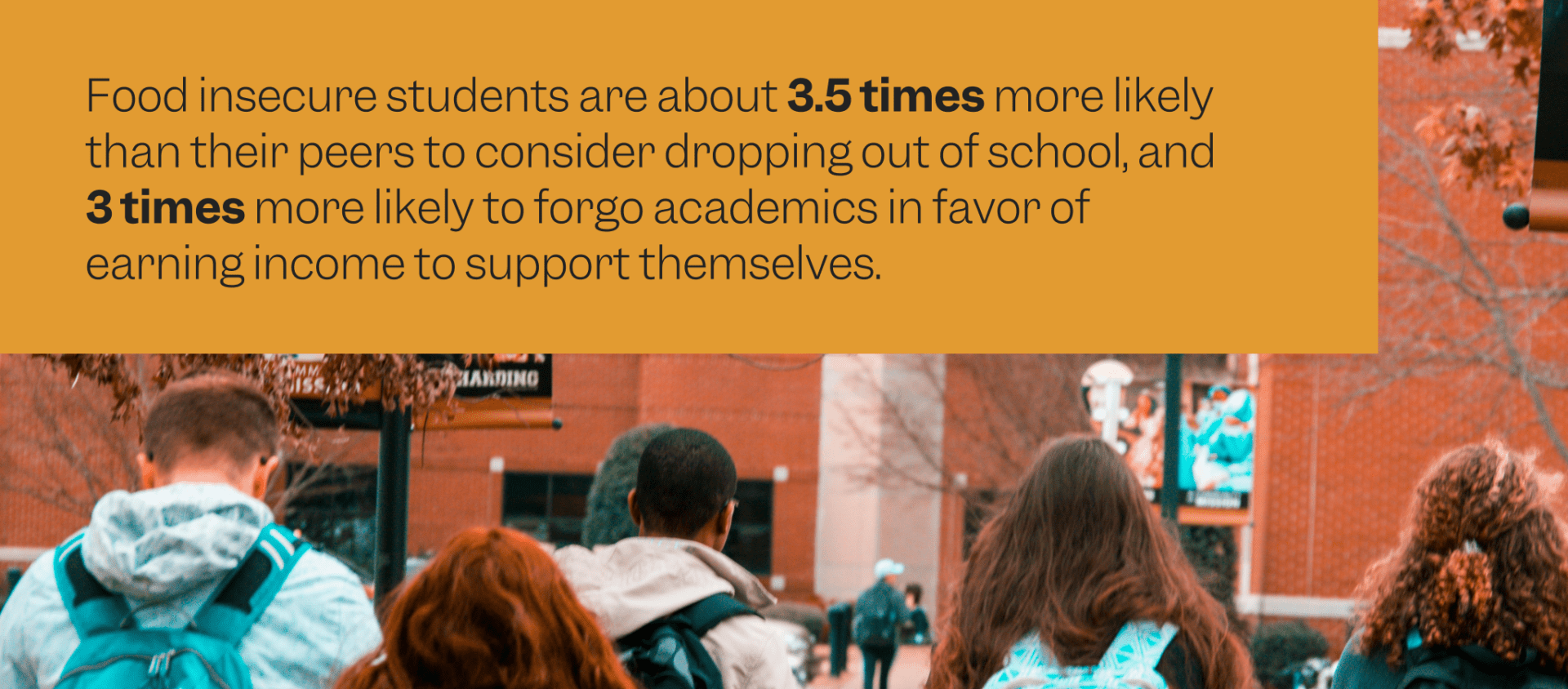
Child hunger leads to higher healthcare costs for families already struggling to pay bills. Underfed children are more likely to be hospitalized, and the average pediatric hospitalization costs over $10,000. Rising healthcare and insurance costs place additional burdens on families, further compounding the challenges they face.
Lastly, kids without enough food are more likely to be disruptive at school and more likely to end up involved in the juvenile justice system. Hunger can impact emotional regulation and decision-making, increasing the risk of conflicts with peers and authority figures both in and outside the classroom.
What We Can Do To Address Domestic Childhood Food Insecurity?
There are many ways to alleviate child hunger. From food banks and community gardens to meal delivery services, sandwich distribution projects, and other programs carried out by churches and charities, people are stepping up to make a difference in their communities regarding hunger. Additionally, federal and state governments have safety-net programs to address this crisis. While every piece of the puzzle is essential to solving a problem this complicated, government programs provide many times more hunger-related assistance than private charities. At Bread, we work to ensure that critical anti-hunger programs – many of which are being challenged in Washington – are funded and expanded when necessary.
WIC
One federal initiative critical to addressing childhood malnutrition is the Special Supplemental Nutrition Program for Women, Infants, and Children, known as WIC. WIC seeks to bolster the nutrition and healthcare of lower-income pregnant women, women who are breastfeeding, and children under the age of five.
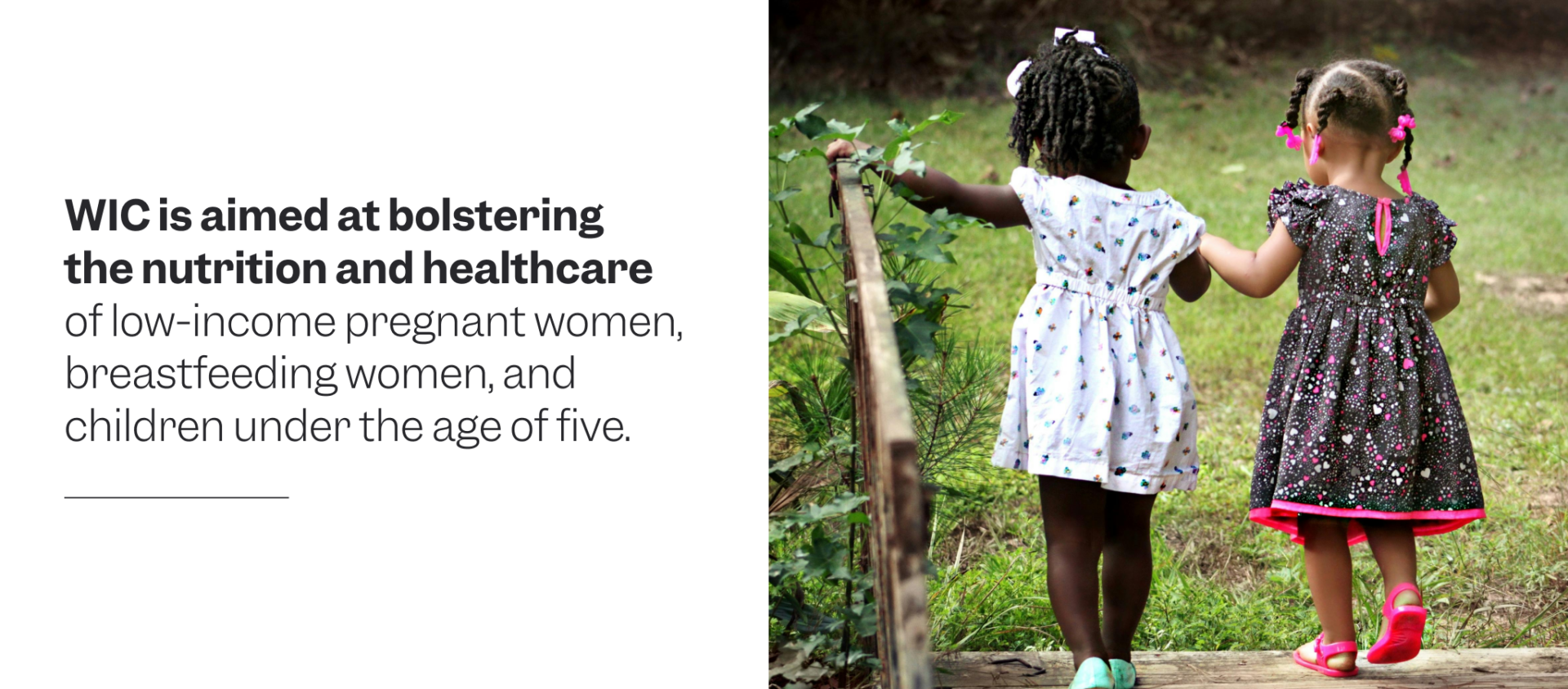
Through the provision of nutritious foods, nutrition education, breastfeeding support, immunization screening, and important health and social services referrals, WIC gives vulnerable families access to essential resources for healthy growth and development. In 2023, the last year data is available, the program reached nearly 6.6 million women and young children, including about 40 percent of all infants born in the U.S.
WIC was launched as a pilot project in 1972 and became a permanent program in 1975. WIC has long enjoyed bipartisan support and funding. Recently, however, its funding has become more politically divisive. For the continued success of families, it’s essential that we help ensure programs like WIC continue to receive broad bipartisan support
In addition to a bipartisan commitment to full funding, WIC needs to be updated for the modern world. It is vital that Congress reduce barriers and improve access to WIC by providing electronic and telehealth options so that families can become certified and recertified for the program, conduct appointments, and receive benefit payments without burdensome in-person visits.
These improvements help keep families engaged and enrolled in the program – ensuring they have the nutritional support they need.
SNAP
Another federal initiative with a significant impact on childhood food insecurity is the Supplemental Nutrition Assistance Program (SNAP), formerly known as food stamps. SNAP provides food benefits to low-income families to supplement their grocery budget, making nutritious food more affordable for an average of 41 million people in the U.S. per month.
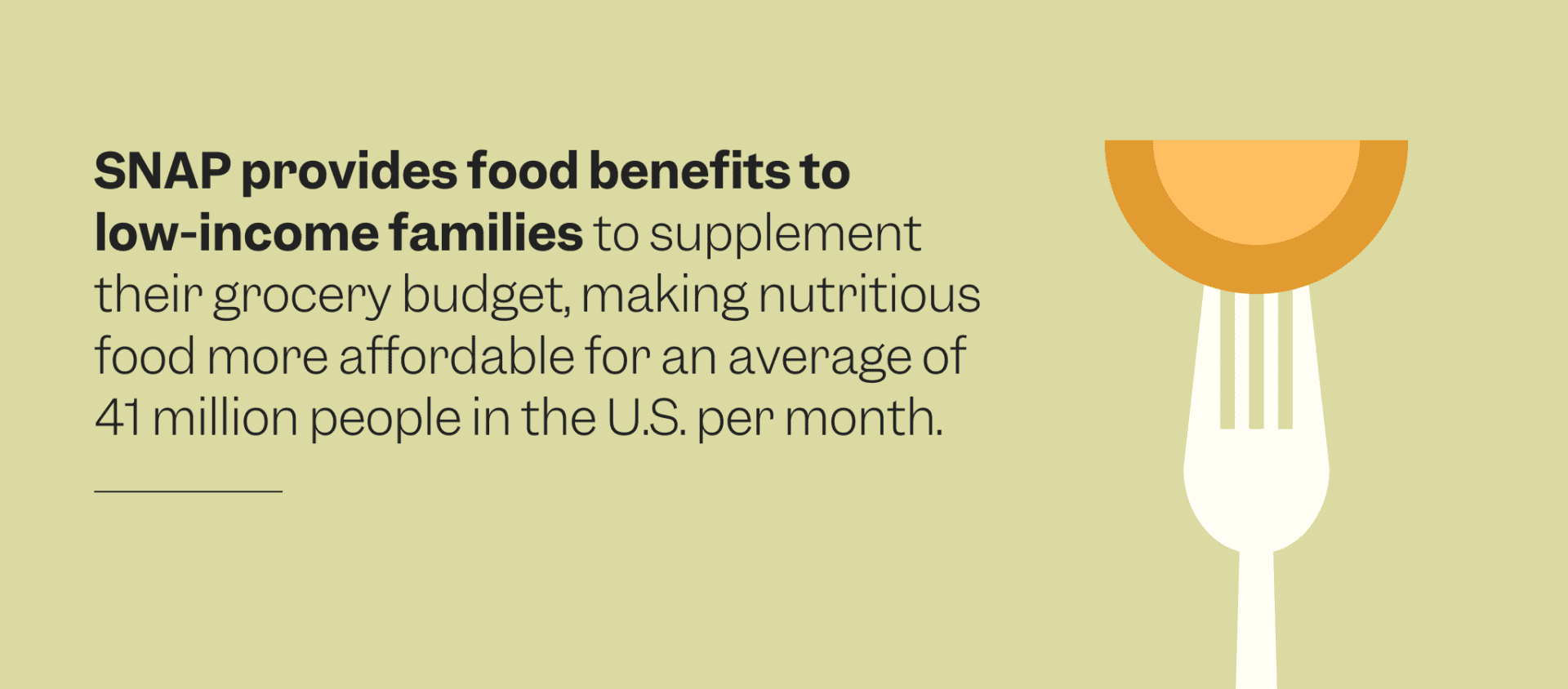
SNAP plays a crucial role in protecting children from hunger during economic downturns and was designed to respond quickly and efficiently to increases in need. During the pandemic, SNAP helped ensure families had the nutrition they needed.
Improving SNAP participation among eligible college students is one way to make the program even more effective. In 2020, an estimated 3.3 million college students were eligible for SNAP benefits. Of those eligible students, 2.2 million students reported that their household did not receive any SNAP benefits. In other words, two-thirds of students who likely meet the stringent eligibility criteria to enroll in SNAP are not benefiting from the program. This is called the “SNAP GAP.” College students who are at risk of food insecurity and eligible to participate should be made aware that they can get help from SNAP.
Child Tax Credit
Another proven policy tool for reducing child poverty and hunger is the child tax credit (CTC). The CTC has strong bipartisan support and was previously expanded under Republican and Democrat congressional majorities, most recently in 2017 and 2021, respectively. The 2021 expanded CTC, significantly reduced child hunger and led to a 50 percent reduction in childhood poverty – a record one-year decline. By extending the full benefit to the lowest income families and allowing families to receive the benefit in monthly payments, the expanded credit allowed millions of households to afford more consistent, nutritious meals for their children.
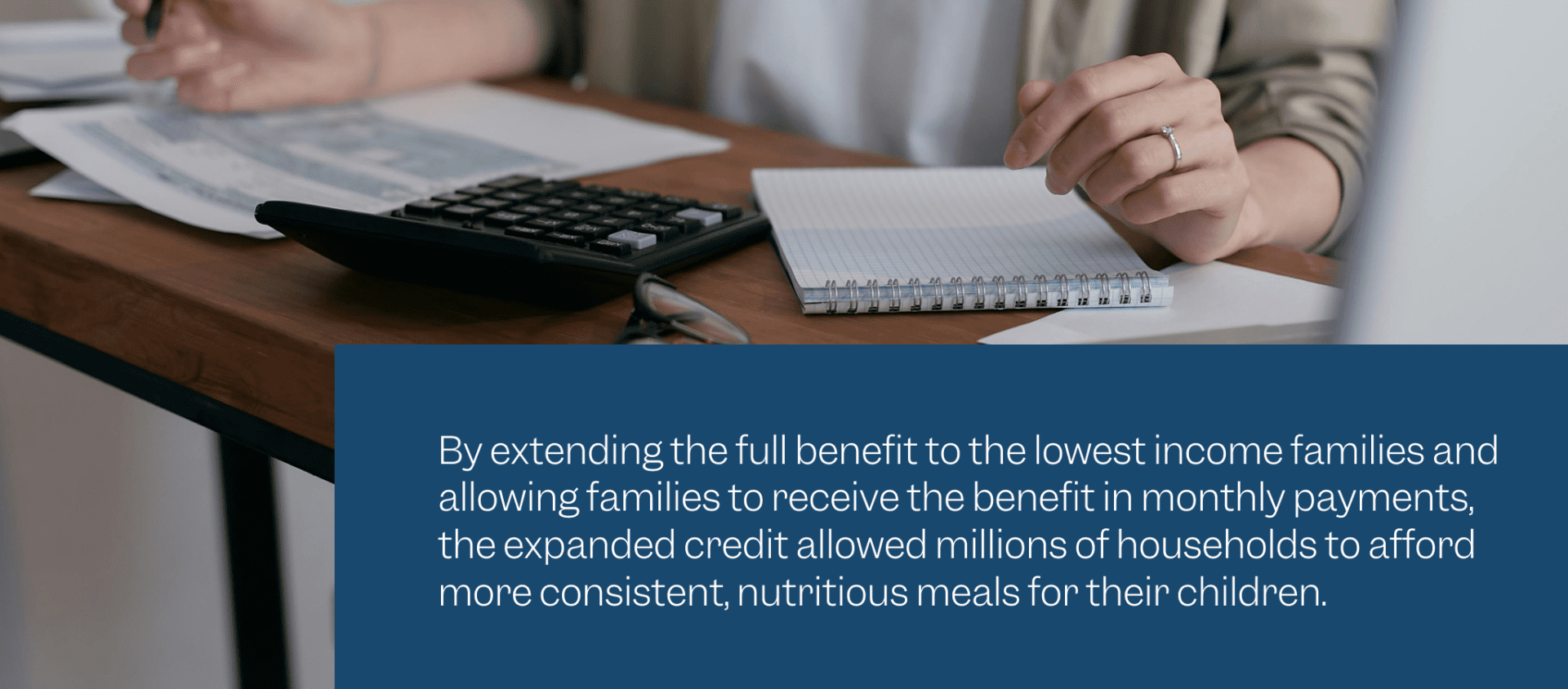
In 2024, Bread welcomed the House of Representatives’ passage of a child tax credit expansion included in the bipartisan, bicameral Tax Relief for American Families and Workers Act. Unfortunately, the Senate failed to move the legislation forward. In the first year, the expansion would have benefited 16 million children, including nearly 3 million kids under the age of three. It was also projected to lift 400,000 children out of poverty.
The clear, data-backed success of expanding the CTC emphasizes how targeted financial policies can directly reduce childhood hunger. Bread for the World continues to urge Congress to expand the child tax credit as a proven step toward prioritizing the reduction of child poverty and hunger.
School and Summer Meals
The National School Lunch Program (NSLP) makes a tangible difference in ensuring that American children have enough to eat. The program provides free or reduced-cost lunches to children and operates in nearly 100,000 schools and childcare institutions. In 2023, the program gave 4.6 billion lunches to nearly 30 million children.
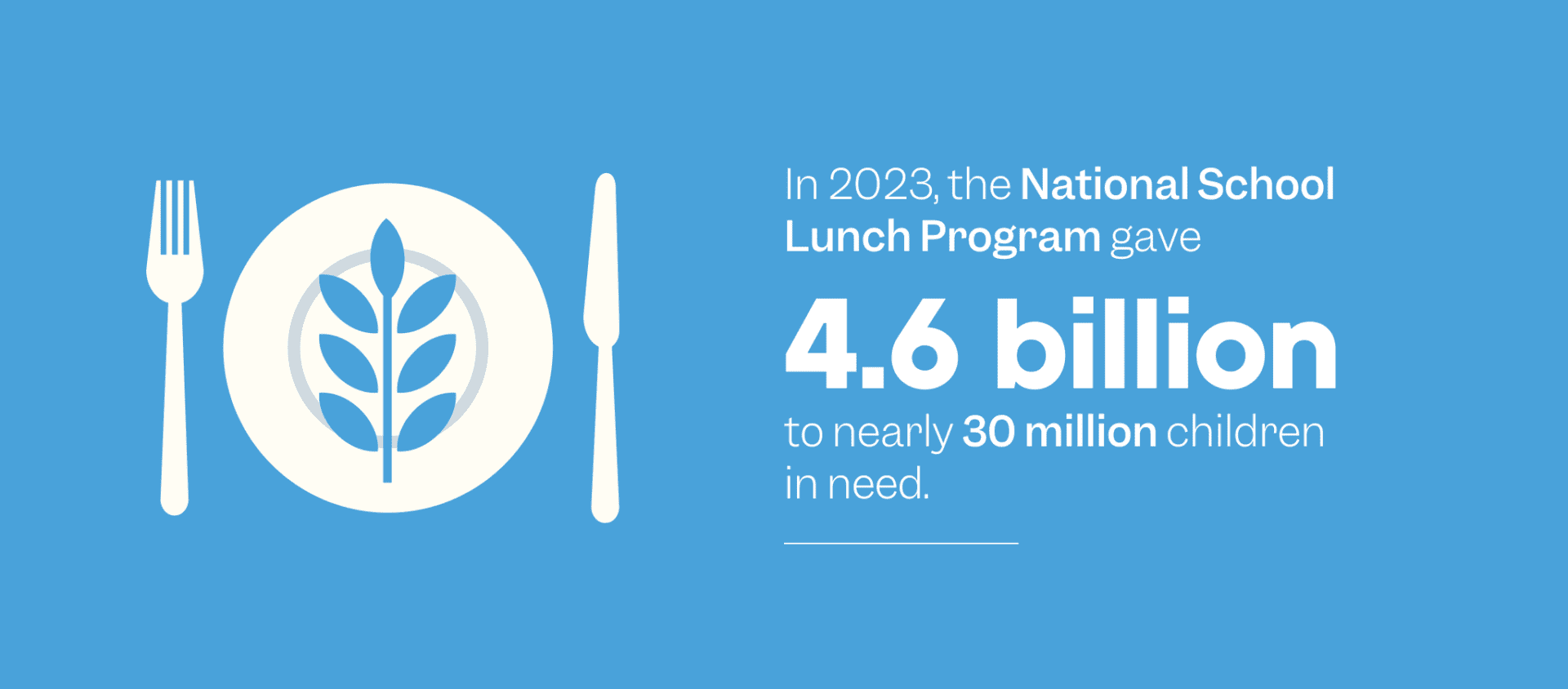
Although a brief two-year period during the pandemic saw a program expansion that gave all children at qualifying schools access to free lunch, regardless of family income, it has since been allowed to expire, despite the efforts of Bread and other advocacy organizations that worked to prevent it from lapsing.
Still, some states have enacted legislation to establish universal school meals: California, Colorado, Maine, Massachusetts, Michigan, Minnesota, New Mexico, and Vermont. Children in dozens of other states, however, are being left out. Making school meals available to all children who need them is the original objective of NSLP and the School Breakfast Program.
Collectively, these programs provide tens of millions of children in the U.S. with the nutrition they need to grow and develop.
The Facts About Childhood Hunger Globally
After decades of progress, global hunger and malnutrition began to reverse course in 2014 and continue to get worse. Conflict and political instability, rising food prices, climate impacts, and economic downturns are primary drivers of the crisis. In 2023, chronic hunger, as measured by not consuming enough calories to lead an active and healthy life, affected about 9.1 percent of the global population – nearly one in every 10 people on Earth. Most of the people living with malnutrition are concentrated in South Asia, sub-Saharan Africa, and Central America.
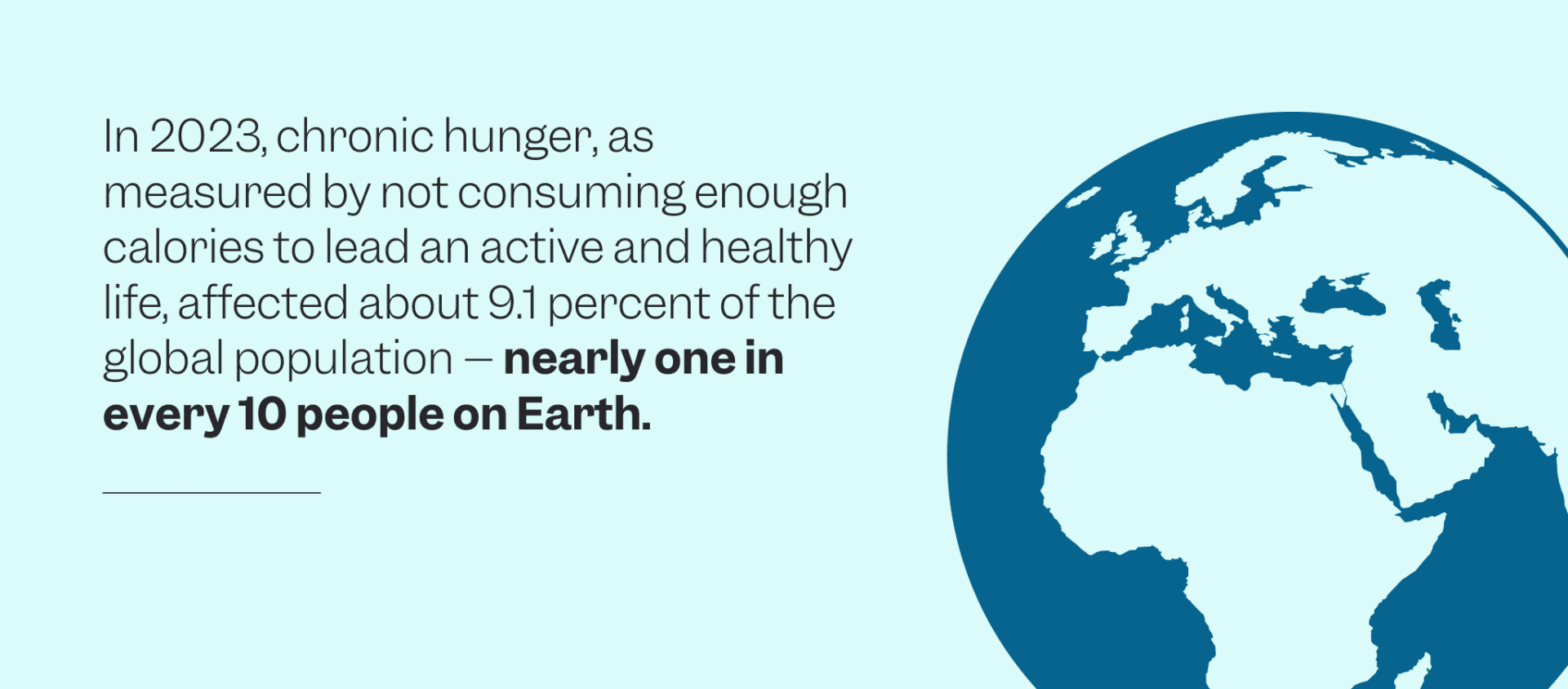
The United Nations estimates that almost 45 million children under the age of 5 suffer from wasting (a condition whereby a child is severely thin for their height due to poor nutrition). Nearly half of all preventable deaths among children under five are attributed to malnutrition. And yet, we are only able to reach roughly 25 percent of children suffering from the most dangerous form of malnutrition.
Children who survive malnutrition in their early years are at high risk of stunting: lifelong damage to their health and their physical and cognitive development, which experts believe is largely irreversible. More than one-fifth of the world’s children under five, an estimated 22 percent, are affected by stunting.
What We Can Do To Address Global Childhood Food Insecurity
Programs that help prevent and treat child malnutrition in lower-income countries save lives, help communities thrive, and are a truly Christ-inspired approach to foreign assistance. Robustly funding global nutrition programs requires only a tiny fraction of the U.S. federal budget, but will reach millions of children and mothers with lifesaving aid. These programs also support U.S. strategic interests by building and maintaining relationships with partner countries and promoting regional stability.
Although hunger is on the rise, real progress has still been made: extreme poverty has been cut by two-thirds since 1990, as humanitarian aid, debt forgiveness, and sustained global economic growth have cut down the number of people in desperate need. This shows the impact that committed aid can have.
One strategy to boost global childhood food insecurity is to focus on the first 1000 days, the time between pregnancy and a child’s second birthday – the most critical window for human nutrition. Strategies to address the first 1000 days include treatment of acute malnutrition, education and promotion of breastfeeding, nutrition supplements for children, adolescent girls, and pregnant women, and preventive malaria treatment.
Government programs often partner with local organizations that are already working to end childhood hunger and malnutrition on the ground. Assistance from the U.S. government gives people tools to help themselves. For nutrition programs to be impactful, they must be funded appropriately, and when they are, history shows the great strides that can be made. With continued and robust funding, U.S. foreign assistance can help cut global childhood malnutrition to nearly zero.
Conclusion
Childhood hunger and malnutrition are crises that we as Christians have an obligation to end. And unlike many problems that we face, it is solvable, through smart policy, strong commitments, and the will to make it happen. We can nourish our future if we choose to; we can help feed a hungry and malnourished world if we follow the teachings and model the love of our Lord Jesus Christ.
“Let the children come to me, and do not stop them, for it is to such as these that the kingdom of heaven belongs,” said Jesus in Matthew 19:14 (NRSVUE).

Participate in Bread for the World’s 2025 ‘Offering of Letters’ by emailing your members of Congress and urging them to fully fund and strengthen the Special Supplemental Nutrition Program for Women, Infants, and Children (WIC) and secure essential funding for global nutrition programs.



